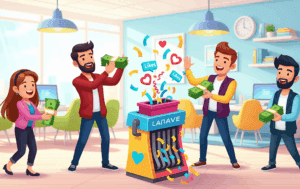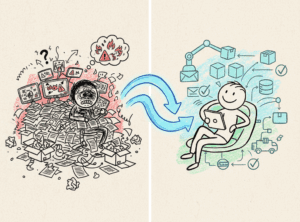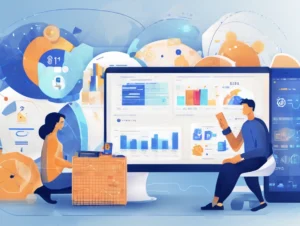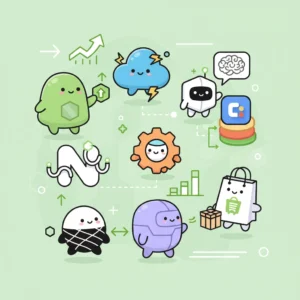When I think back over my career in e‑commerce, one pattern stands out — too many businesses expect instant results. They treat E‑Commerce like flipping a switch. Launch the site, add products, run a few ads, and sales should roll in by Friday, right? Well, online commerce doesn’t work that way. It never has, not even in the early 2000s. Success comes from consistent planning, patient execution, and a willingness to improve steadily over time.
If you’re approaching E‑Commerce like just another retail channel, you’re setting yourself up for disappointment. Let’s look at some of the common pitfalls and how to avoid them…
E‑Commerce Isn’t Just Another Store
A physical store has staff on the floor — people who can answer questions, reassure customers, and point them to the checkout. Online, your product page has to do that work. If it doesn’t, the sale is lost.
Many businesses under‑invest here. They treat product pages like an afterthought, when in fact, they’re the online equivalent of your best salesperson. A strong page answers questions before someone asks them — size, fit, materials, delivery times, returns, reviews. If customers can’t find the answers, they’ll leave and look elsewhere, possibly a competitor’s site – then, who do you think they’re buying from once they have the answer? (Hint: Not you)
Don’t Assume the Sale Happens in One Visit
Unlike in‑store shopping, an online purchase often takes more than one visit. People browse on their lunch break, compare options in the evening, and return a few days later to decide. That’s normal behaviour.
Your role is to bring them back. Abandoned cart emails, remarketing ads, and loyalty programs aren’t gimmicks — they’re reminders that meet customers where they are in their decision process. Think of them as the follow‑up a good salesperson would naturally do in store (and like a good salesman, you also need to know when you’re overdoing it).
Build Cycles of Continuous Improvement
One of the great advantages of E‑Commerce is measurability. You can see almost everything — where customers click, where they hesitate, and where they drop out of checkout. That data is gold, but only if you act on it.
I’ve never seen big flashy redesigns of a website result in anything but issues. More often than not, you lose what’s working along with what isn’t. The companies I’ve worked with that grew steadily were always the ones running small, ongoing experiments — rewriting descriptions, simplifying navigation, tweaking checkout steps. Each improvement might feel small, but together they compound into major growth. If you want to see a great example of how these changes add up over time, have a look at Apple’s website over the years on the Wayback Machine. The changes are usually pretty minor over short periods of time (1 or 2 months), but if you compare a version to 3 or 4 years before, they usually look dramatically different.
Think of it like coaching a football team — progress comes from drilling the fundamentals week after week, not from one big speech in the locker room.
Be Careful With Promotions
Promotions can move inventory, but they can also trap you. If you train customers to wait for discounts, they’ll stop buying at regular prices. I’ve seen businesses back themselves into this corner, both online and in store.
Promotions should be occasional levers, not your everyday engine. Use them to clear stock, highlight something special, or match competitors during specific times, but avoid making them the default setting. Otherwise, you’ll find yourself in a cycle of shrinking margins and impatient customers.
Keep Priorities Clear
One of the hardest parts of leading E‑Commerce teams is protecting focus. Tell me if you’ve heard this on? An executive reads about a shiny new feature or trend and suddenly it’s “priority number one.” Sound familiar?
The problem is, last month’s “priority one” is still unfinished. Urg!
When priorities keep shifting, nothing gets done. Small teams feel this the most — projects stall, people stop believing their work makes a difference, and morale dips.
Your job is to protect clarity. Sometimes that means saying NO. Other times it means saying — “If we do this, we won’t finish that. Which do you prefer?” Framing it this way helps leadership understand the trade‑offs.
Measure Progress Over Months, Not Days
It’s tempting to panic over a bad day of sales, or even a slow week. Resist that urge. Short‑term dips happen all the time — weather, holidays, competitor promos, even a glitch in online ads can skew the numbers. This doesn’t mean you’re doing badly.
What matters is the trend over months. Is your traffic growing? Are conversions improving? Are repeat purchases holding steady? Those longer patterns tell you whether your strategy is working.
I’ve worked with teams that abandoned promising initiatives because of one off week. That’s like cancelling football practice because you lost a single game — short‑sighted and costly. Watch the bigger picture.
Think in Years, Not Quarters
E‑commerce growth doesn’t come from quick fixes. It comes from building a solid foundation — proper staffing, integrated systems, and a clear strategy you stick with. Over time, consistency pays off.
Yes, experiment. Yes, adapt. But don’t chase every fad. The businesses that thrive online are the ones willing to be patient, disciplined, and focused on the long game.
Final Thoughts
E‑commerce can be exciting, but it’s also demanding. It requires patience, steady improvement, and the discipline to keep your eyes on the bigger plan. If you treat it like just another store, or chase every new idea you see, you’ll struggle. If you treat it as the long game it truly is — measuring progress over months, protecting priorities, and steadily improving — you’ll give yourself and your team the best chance to succeed.
After thirty years in this field, that’s one lesson I keep coming back to — the long game always wins.





